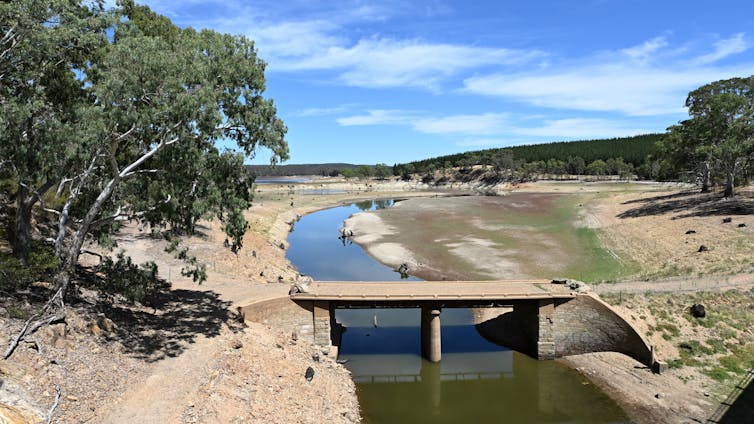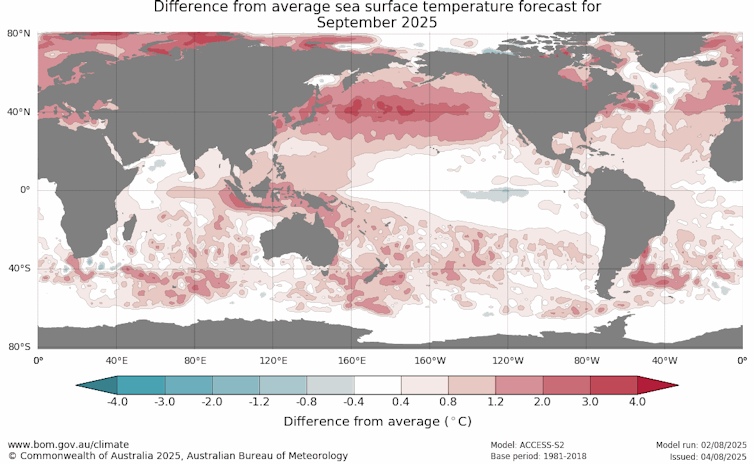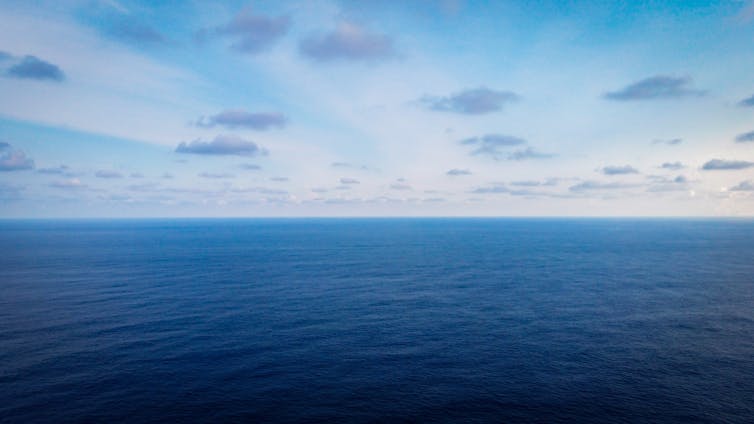As Spring in Australia Nears and the Days Get Longer, You Might Be Wondering What The Rest of the Year Holds for our Weather.
There are signs that changes in the Indian Ocean Will Bring a FEW Wet Months to our Part of the World. Specificylly, The Indian Ocean May Be Envering A Negative «Dipole“Phase.
Where is this serious, the Tropical Eastern Part of the Ocean Is Warmer Than Average, and the Tropical Western Part Is Cooler Than Average.
This is the contacts Influence Moisture Levels and Affect Circulation in the Atmosphere, RAISING The Probility of Supercharged Spring Rains Across Much of Australia.
But the Devil’s in the Deetail – and it’s Too early to say all of australia is definitely in for a drenching.
Petar B Photography/Shutterstock
Looking for Clues in the Ocean
After Early AUTUMN HeatAustralia Has, on Average, Experienceed A Warmer-Than-Normal Winter to Date.
JULY WAS Australia’s Second-Coldest in a Decade. Buter Climate Change, our Winters are gradually Warming. So the JULY JUST GONE WAS CONSIDLY Warmer Than The Typical July of the 20th Center.
When it comes to ray, this winter has been Fairly Average Sofar. Parts of South Australia, Victoria, Tasmania and Western Australia Are, Howver, in DROUGHT with SONE of the Lowest Multi-Year Rainfall Totals on Record.
Recent Falls Happy Help in Some DROUGHT-Stickeen Areas, But More is nevered.
So what do the Next Few Months Hold? For Clues, We Can Look to the Oceans Around Australia.

Aap Image/Michael Errey
A national girl by sea
Australia Is Surrounded by the Pacific, Indian and Southern Oceans. That Means Our Climate is Heavily Influenced by the SEAS Around Us.
Warm or Cool Conditions on the Sea Surface Off Persist for Long Periods. This Affects What Weather Systems Form and Move, and where Moisture Builds in the Atmosphere.
In Turn, this helps drive changes in Rainfall and Tempeatures on Land Over Months or Seasons. So, Understanding and Predicting these Ocean Conditions can be usful.
La niña and el Niño Events are the most-known Type of Ocean Variability to Affect Australia.
During A. La niñaThe West Pacific Ocean Warms, Increasing the Likelihood of Rain-Bearing Weather Systems Affecting Australia. In An El NiñoWater Warms Further East in the Pacific and Australia Is More Likely to Be Drier.
At the Moment, We’re in Neigher La Niña or El Niño Conditions and the Pacific Looks set to Remain in a newral state.
The Indian Ocean is a Direction Story, Though.

Bureau of Meteorology
How The Indian Ocean Shapes Australia’s Weather
The Indian Ocean Dipole – or IOD for Short – Invollves Variations in Tropical Sea Surface Tempics.
In NEGATIVE IOD Events, Warmer Waters Build Up in the East Indian Ocean, and Cooler Waters Build in the West. In positive IOD Events, The Opposite Occurs.
Negative Dipoles Typically Make the Air Over Much of Australia More More More More The Continent’s Southheast More Likely. This Tends to Bring Wetter Conditions to Much of Australia’s Southheast in Late Winter and Early Spring.
Currently, The Indian Ocean Is in A Newral State. Howver, the Bureau of Meteorology’s Outlook Points to Warmer Waters Building in the East Indian Ocean and, Postibly, A Negative IOD Forming. This will mean a month Months ahead.
Outlooks by International Organisations Also Suggest a Negative IOD May Become Fully Fleedged.

Bureau of Meteorology
Indian Ocean Dipole Events Typically Weaken in Late Spring and Lose Influece Over Australian Rainfall by November. But they can winger.
In 2019, a positive iOd person inso late spling and controlted to the verify the simults that LED into The Black Summer of 2019–20.
The Indian and Pacific Oceans are, Of Course, Connected. Negative IOD EVENTS OFTEN AcOCOPANY LA NIñA, and the Two Can Reinforce Each Other to Bring Big Rains to Much of Australia.
But with a la niña on the horizon, Howver, We Can’t say with full confided announced that australia is in a very wet Few months, o

ILHAMK42/Shutterstock
A Fast -Volving Indian Ocean
Overall, Scientists Know A LOT Less About
Under Climate Change, The Indian Ocean is Rapidly WarmingWho is Alternization the IOD. But thre’s more work to do before Scientists Fully undersand this trend.
How, Studies Suggest if Humanity’s High Rate of Greenhouse Gas Emissions Continues, We’ll See More Extreme Iod phases and Changes in Sea Tempterture Patterns.
Already, RecONSTRUTIORERES OF The Climate Over the Past Millennium, Using Coral Growth Records, Suggest We Are Experienceing More positive Iod Events Thane in the past.
Variability in the Indian Ocean is Important Not Only to Australia’s Climate, but also to those of South and Southheast Asia And East Africa. It’s Implementing We Build A Clearer Pictite of the Indian Ocean Dipole to Support Climate Adaptation Efforts, Including in Some of the World’s Most Vulnerable Regions.
More Research is Needed In THE IOD Will Change if we control emitting Greenhouse Gases – or if we succeed in rectification net zero. Scientists also Need to Know How these Changes Might Interest with Regional Climates.
At the Moment, our Projects Are Still Unclear – and this hampers our abilay to adapt.


